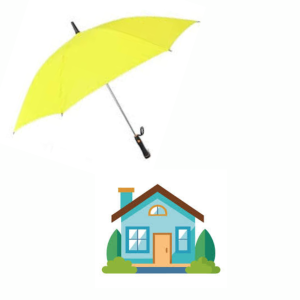
Waterproofing Solutions For Homes
Waterproofing solutions to homes is very important in the prevention of water incidences especially during the rainy season. These solutions assist in minimizing the damaging seepage of water and dampness in areas that include walls, roofs, basement other regions. Some effective waterproofing solutions include:
1.Wall Waterproofing: Patch immediate holes in the exterior walls to keep away moisture from penetrating into the house.
2.Roof Waterproofing: That is why on terraces and roofs, waterproof membranes, bitumen coatings or elastomeric paints against rainwater leakage are recommended.
3.Crack Repairs: Caution and cover up any crack in walls, ceiling or floor with high quality filler/ sealant to minimize water entry points.
4.Basement Waterproofing: Include a waterproofing compound or crystalline treatment for a basement wall or floor finish to prevent ground moisture penetration.
5.Drainage Maintenance: Check the pens to see that there is no water stagnation to the gutters, downspouts as well as drainage systems.
6.Window and Door Sealing: Use strips of weatherproof or silicone sealants around doors and window frames to avoid seepage.
7.Anti Damp Treatments: Where moisture has a high propensity of accumulating it is recommended that damp-proof membranes or injections be employed.
Waterproof Flooring Fix moisture resistant flooring materials on the walls in the bathroom and other places like balconies.
Home Waterproofing Tips for Monsoon
1. Check the Roof for Leaks :Walk around your roof and check for any missing tiles, any cracks on the ceiling, or worn-out shingles. It may seep through the wall when it rains and thus the need to repair or replace them.
2.Clear Gutters and Downspouts :If you have trees on your property, then it is high time you removed any accumulated leaves and any debris that may be blocking the flow of water in your gutters and downspouts. Inability to flow free will lead to water accumulating and in turn seep into your house.
3.Seal Windows and Doors: Caulk of leakages found in windows and doors or weather strip them to prevent passage of cold air into the house. This helps in stopping rain water from penetrating through the small cracks thereby will not allow formation of leaks.
4.Waterproof the Basement :If you own a house look for cracks on the wall or the floor in your basement. Seal the basement with waterproofing sealant to cover any gaps in the walls, to avoid the basement being flooded.
5.Hang exterior waterproof coatings :Exterior walls of your house, paint or varnish with moisture repellent paint. This will form not only a rain barrier that will shield the area from moisture damage.
6.Proper Drainage Around the House Should Also be Correct :Tie down your utility bills and check that the ground declines at the correct angle, making it unlikely that water will pool by your home’s base. Add other forms of drainage ,french drains if the area is wetting.
7.Waterproof the Foundation: Smooth your walls that are your foundation then apply the waterproofing membrane or sealant to it. This one assist Cork to keep out moisture penetration to homes especially during the rainy seasons.
8.Protect Electrical Outlets: Make sure all outlets and switches and all sockets if any are protected from water and are elevated from the floor level.
9.Test Sump Pumps :If you have sump pump ensure that it over before the onset of monsoon seasons to be sure it is functioning as expected. Basement waterproofing could be achieved by the functionality of the sump pump to avoid water buildup in the basement
FAQ About Waterproofing Your Home This Monsoon
1. Why is waterproofing important for my home during the monsoon season.
Waterproofing is essential to protect your home from rainwater damage, leaks, mold growth, and structural deterioration. It helps ensure your home stays dry, safe, and free from water-related issues during heavy rainfall.
2. How can I check if my home is at risk of water damage.
Inspect your roof, walls, windows, and foundation for cracks, leaks, or damp spots. Pay attention to areas like basements, crawl spaces, and the attic. If you notice any water stains or rising damp, it’s time to address the waterproofing.
3. What are the best methods to waterproof my home during the monsoon.
Key methods include sealing windows and doors, applying exterior waterproof coatings, cleaning gutters and downspouts, checking the roof, waterproofing the basement, and ensuring proper drainage around your home.
4. Is waterproofing only for the roof or should I focus on other areas as well.
While the roof is an essential area, you should also focus on the foundation, walls, windows, and basement. These are key areas where water can seep in and cause significant damage during monsoon rains.
5. What type of waterproofing products should I use.
The most common waterproofing products include silicone sealants, acrylic or polyurethane-based coatings, waterproofing membranes, and bituminous paints. Choose products based on the surface you need to treat walls, roof, basement.


